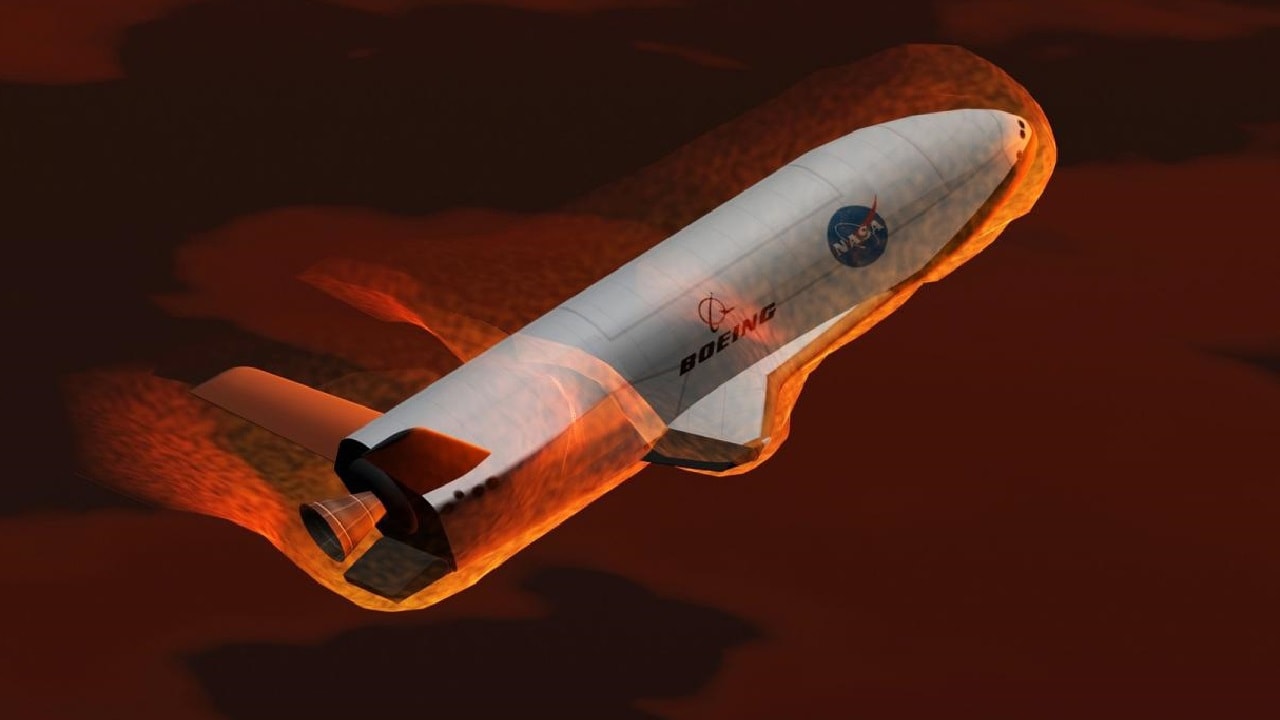The United States military’s X-37B robotic space plane is inching closer to going where no one has gone before – and not just because it is an unmanned mini-shuttle. The NASA test vehicle is actually close to setting a new mission-duration record. The X-37B was first launched into Earth orbit by an Atlas-V 501 booster on May 17, 2020, on its sixth mission for the program. The current flight – the Orbital Test Vehicle-6 (OTV-6) has now been aloft for 774 days and is closing in on the 780-day record set by OTV-5 on Oct. 27, 2019.
While the X-37B will likely reach a new milestone for a craft that can return to Earth, it technically would have quite a ways to go to reach the overall mark for orbital stay – and as space journalist Leonard David has noted the Landsat-5 satellite circled our blue planet for some 29 years.
The X-37B Orbital Test Vehicle (OTV) was developed by Boeing for the United States Air Force as an experimental test program to demonstrate technologies for a reliable, reusable, unmanned space test platform. Its primary objectives are to test reusable spacecraft technologies for America’s future in space, and for operating experiments, which can be returned to, and examined, on Earth. NASA’s original X-37 program began in 1999 and was transferred to DARPA in 2004. It is now under the domain of the United States Space Force’s Delta 9, which was established and activated on July 24, 2020.
“Delta 9 Detachment 1 oversees operations of the X-37B Orbital Test Vehicle, an experimental program designed to demonstrate technologies for a reliable, reusable, unmanned space test platform for the U.S. Space Force,” the unit’s fact sheet explains.
Its mission is to prepare, present, and project assigned and attached forces for the purpose of conducting protect and defend operations and providing national decision authorities with response options to deter and, when necessary, defeat orbital threats.
The OTV Success Story
The Air Force has already successfully completed five X-37B missions: OTV-1 through OTV-5. All five missions launched from Cape Canaveral Air Force Station, Florida, beginning with its first launch on April 22, 2010. OTV-1 through OTV-3 all landed at Vandenberg Air Force Base, California, while OTV-4 and OTV-5 landed at Kennedy Space Center in Florida.
Through five completed missions, the X-37B has spent a total of 2,865 days in orbit, successfully checking out the X-37B’s reusable flight, reentry, and landing technologies as well as operating experiments to benefit the national space community.
OTV-6 is the first X-37B mission to use a service module to host experiments. The service module is an attachment to the aft of the vehicle that allows additional experimental payload capability to be carried to orbit. It is unclear where – and even when – it might come down.
Past OTV mission stats:
*OTV-1 launched on April 22, 2010 and landed on Dec. 3, 2010, spending over 224 days on orbit.
*OTV-2 launched on March 5, 2011 and landed on June 16, 2012, spending over 468 days on orbit.
*OTV-3 launched on Dec. 11, 2012 and landed on Oct. 17, 2014, spending over 674 days on orbit.
*OTV-4 launched on May 20, 2015 and landed on May 7, 2017, spending nearly 718 days on orbit.
*OTV-5 launched on Sept. 7, 2017 and landed on Oct. 27, 2019, spending nearly 780 days on orbit.
What the Experts Think:
“The X-37B is clearly a top-tier space vehicle that could have far-reaching military capabilities either in its present form or in a new vehicle using all of the lessons learned,” explained Harry J. Kazianis, now President of the Rogue States Project and seasoned military expert. “It makes sense why Russia and China are so interested in the X-37B, as a platform like this could do real damage in a space-based war.”
Now a Senior Editor for 1945, Peter Suciu is a Michigan-based writer who has contributed to more than four dozen magazines, newspapers and websites. He regularly writes about military hardware, firearms history, cybersecurity and international affairs. Peter is also a Contributing Writer for Forbes.

